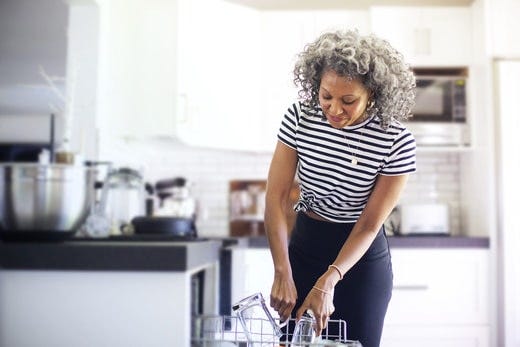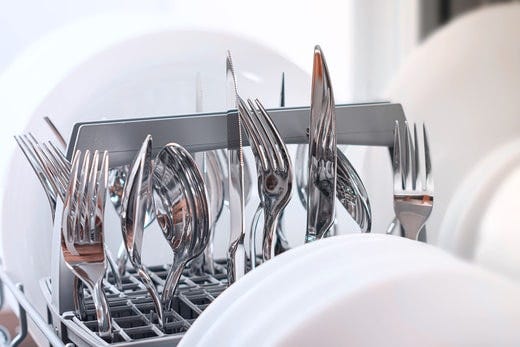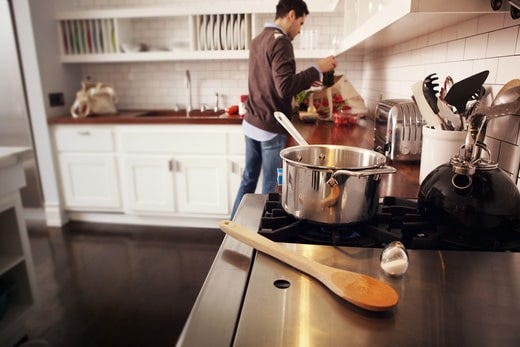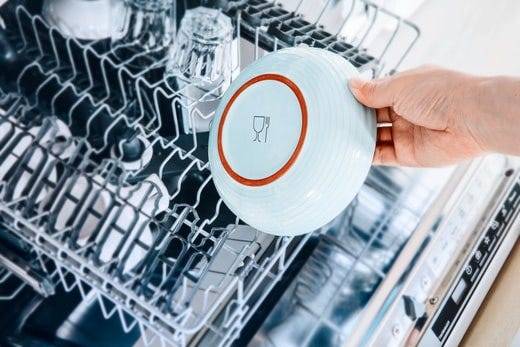
How to load your dishwasher
Find out how to load your dishwasher properly for optimal cleaning. From rinsing to not overloading to stacking your kitchenware in the best spot, we cover best practice.

Despite how advanced your dishwasher or how powerful your dishwashing detergent may be, you run the risk of an unsatisfactory clean if you don’t stack your dishwasher correctly.
Our simple tips below can help:
Don’t rinse your dishes
No need to! Pre-rinse should be a thing of the past - it can be time consuming and wasteful. It can waste up to 40L of water per washload1.
Finish’s detergents such as Ultimate All in 1, Ultimate Pro All in 1 and Ultimate Pro Material Care contain both bleach and enzymes, so you don’t need to pre-rinse. Bleach fights tough stains like tea and coffee, and enzymes breakdown proteins and starches. All you have to do is scrape the larger pieces of food into the trash and load your dishwasher.
1Source: Brunton 2009. Results based on Australian testing of average water consumption 2.5 star 12-place setting dishwasher vs handwashing 106 people, Nov 2017.
Don’t overload
It may be tempting to squeeze all your family’s dishes into one load to save time, but an overloaded dishwasher can cause damage to dishes. Plus, you may find that items don’t clean as well due to overcrowding disrupting the flow of the water and detergent.
Keep plastics on the top rack
The hottest part of your dishwasher is at the bottom, where the heating element is positioned. Keep your dishwasher-safe plastics on the top rack to prevent them from warping.
Load your glasses and mugs on the top rack
The top rack of your dishwasher is also designed to clean cups, glasses and mugs – when they’re placed correctly, the water and detergent can effectively clean inside.
Place heavily dirtied items face down
If you’re cleaning trays or items with baked on food or other stubborn residue, make sure you place them face down, so the spray arms can effectively clean with accurate amounts of pressure.
Load utensils in the dishwasher handle down
Load your forks and spoons handle down to make sure the dirtiest parts get cleaned the most thoroughly. For knives, however, you’re going to want to load them blade down, handle up to prevent you from injuring yourself when unloading.
Put oversized items towards the sides and back
Cutting boards and platters should be placed towards the sides and back of the dishwasher to prevent them from disrupting the flow of water and detergent.
Load dishwasher with pots and pans at the bottom
Most pots and pans made of stainless steel can go in the bottom rack of the dishwasher – however, be sure to check the manufacturer’s advice before loading.



